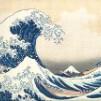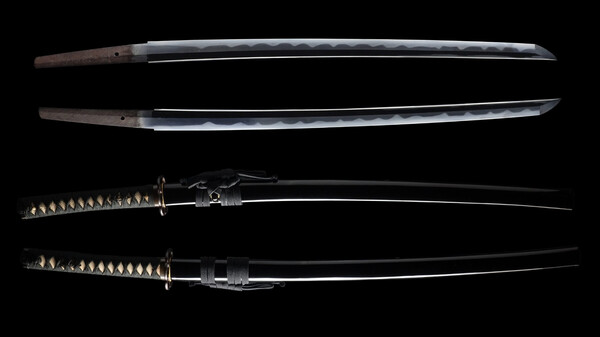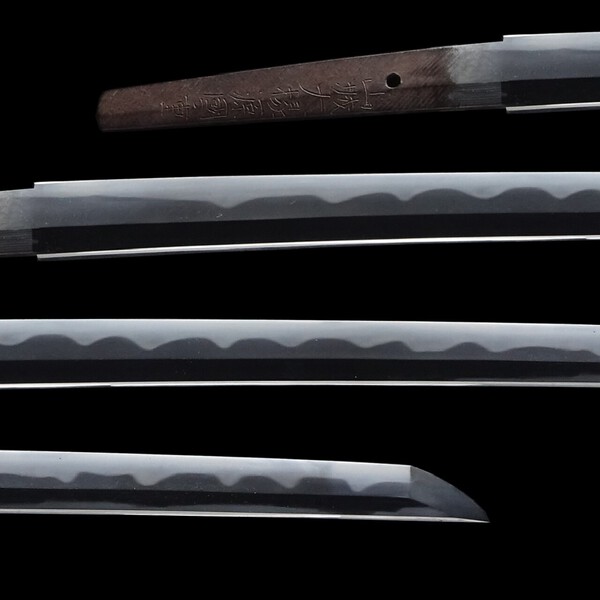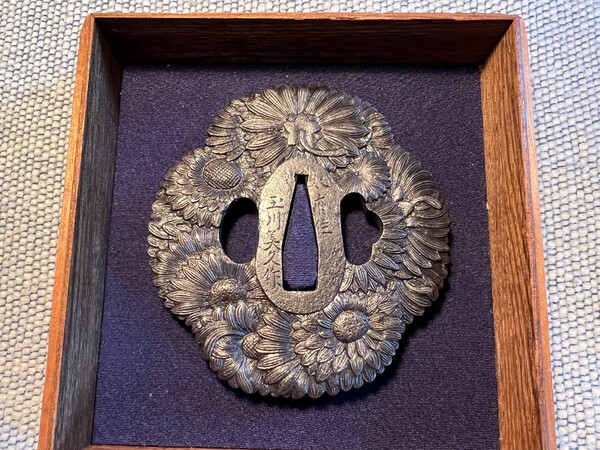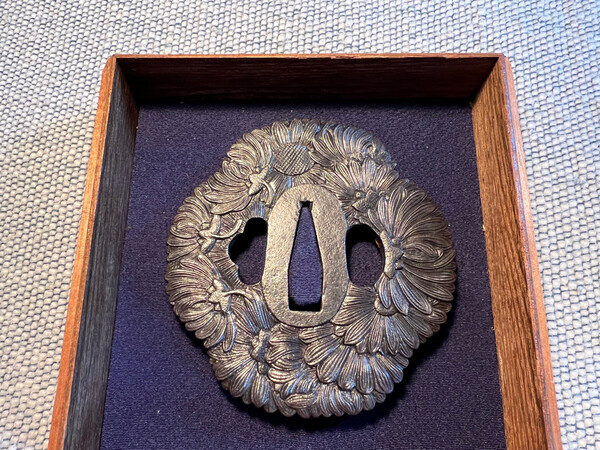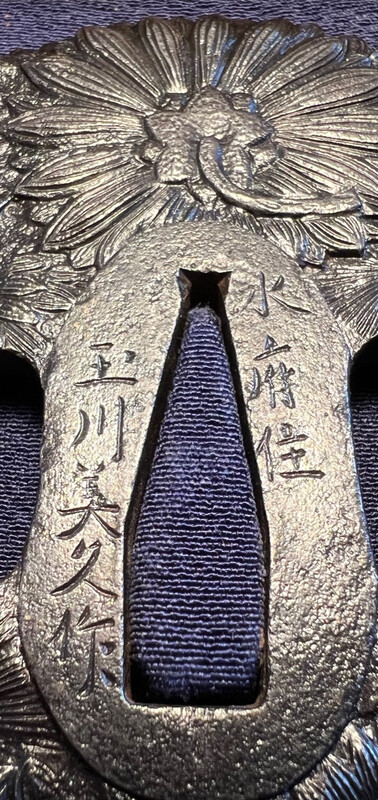-
Posts
31 -
Joined
-
Last visited
Content Type
Profiles
Forums
Events
Store
Downloads
Gallery
Everything posted by JSA
-
Thanks! (video added to watch list…)
-
Just a bit more to the right… 😉 Beautiful!
-
Ok, thanks guys. I’m taking extra care not to touch the blade with bare hands but I was manipulating the tang, so thanks for the confirmation.
-
The patina too?! I thought it was only the blade. 🤬 Thanks for the lesson.
-
It’s not just similar, I confirm it’s the exact same sword. I agree and let me reassure you @SteveM; I’m grateful for your input, whatever the conclusion. You are only replying in good faith to my message and I appreciate it. I’ll definitely need to dig further into this…
-
Thank you for taking the time to look into it @SteveM. There's definitely some confusion around the name, but are you suggesting that the blade in my possession should be attributed to Denshichirō instead of Ichizō? Because that blade was presented to me as Ichizo's (市蔵) work from early Edo period (Shōhō, 1645-1648). If that's true, the blade will still be as beautiful to my eyes, but the financial value will take a big hit as one is rated Chu-jo saku and the other one is not rated at all. Are confident are you about your claim that this blade was forged by Denshichirō? Is there any particular photo angles or parts of the blade that I could provide that could give you more info?
-
I’m sorry, my Japanese is a little rusty: ”一ヶ所だけ小さい疵が確認できます。切先の棟に数ミリの割れのような疵です。鑑賞には差障りのない疵ですが、見て見ぬ振りをしてご紹介するわけにはいきません。あしからずご了承ください。”. Scratch or crack? Edit: Cutting ridge… There’s indeed a small crack on the mune, but French is my first language so I was a bit worried when a saw the words “crack” and “cutting”, as in cutting edge…
-
That’s good stuff Jussi, thanks. I think you might be right about duplicate entries in Seskos and Hawley as well. Actually, the 3rd link you provided is the very same blade. Looks like someone got their initial investment back and then some…
-
Geraint, First of all, thank you very much for your input. It is really appreciated. You beat me to it, as I was about to add to my original post: The blade is indeed signed Yamashiro Daijyo Minamoto Kunishige (山城大掾源国重) and as you mentioned, I was also told that the smith's name is Ichizo (市蔵), the younger brother of Otsuki Yogoro Kunishige, the most highly-regarded swordsmith in Mizuta school (Oyogo Kunishige school, lead by Master Otsuki, Bitchu province). I was also told the blade was forged in the early Edo period, around 1645-1648, so everything is indeed pointing to KUN1026 (Hawley). The thing is I've also found 2 other smiths who signed their work Yamashiro Daijyo Minamoto Kunishige; KUN1037 and KUN1113 (same school, different era). I completely trust the source, but any directions or leads that could help confirm the smith would be appreciated. Here's one more pictures for your viewing pleasure.
-
Hi, I’m trying to pinpoint the smith who forged this blade. Referring to Hawley, am I right with KUN1026? Thanks!
-
Thanks guys! I know how to take care of my blade, but I’ll need to research on how to make sure this tsuba is staying in good condition.
-
The 2nd image (silver plated); Is that a casting? The last one is interesting and led me to this: https://ia600208.us.archive.org/10/items/japancatalogue00japarich/japancatalogue00japarich.pdf The pictures are not great, but I think I see it on page 385…
-
Wow. The ressemblance is uncanny! Not the same smith, but same period. Should I be worried that mine is in such great condition compared to those 2?
-
Hi everyone, I'm still getting my bearings on swordsmiths, let alone tsuba makers, and I'm having a hard time finding information on this beautiful piece. Every new bit of information would be extremely helpful, but here's what I know so far about it: Chrysanthemum theme (duh!) and made of iron, the inscription says Suifu Jyu Tamagawa Yoshihisa (水府住玉川美久). If I'm not mistaken, he was a blacksmith from the late Edo period, he was born in the 10th year of Kyoho (1725) and was the son of the first-generation Yoshinori. He founded the Tamaga school in the Mito domain (today’s Ibaraki prefecture), and it flourished during the late Edo period. Tokubetsu Kicho Certified, it was submitted to the NBTHK Tochigi branch and issued on October 30th in the 46th year of the Showa era (1971). Voilà! Comments and appreciation are also welcome. Thanks and a great weekend to everyone!
-
Thank you Ken. It is indeed a good place to start and now I wonder why I didn’t think about it… 🤦🏻♂️ I’ll have a look at those 1.5K+ post here… Thanks again!
-
Hi everyone, As mentioned, I’m only at the start of my journey into Nihonto. I have only one sword at the moment, but it’s a nice one and I would love to show it to you guys and get your appreciation of the blade and discuss everything there’s to discuss about it (period, smith, blade attributes…), but I don’t know how to go about it. Any suggestions on how I should write my post to optimize the discussion? Thanks!
-
Hi Charles, Thank you for the invitation. It’s a good 5:00 drive from where I’m from and I don’t go near Toronto often, but I’ll remember that and will make sure to let you know if I’m near you. I only have one sword at the moment so anything I can lay my eyes on and inspect is a blessing at this point.
-
Thank you Jon.
-
Thanks Chris, I was thinking a bit more local… 😉
-
Thank you again Barry! I would love to meet that guy. Maybe I’ll get lucky and @Nickupero will show up here.
-
Hi Barry, Thanks! Anyone from Quebec? Would be awesome to exchange on the topic in person while looking at some swords. 😉
-
Hi everyone, Long time lurker, first time poster. I’ll be brief; Humble beginner here and knowledge is what I’m looking foremost. I recently heard the call and a couple of hours later, I was looking at what is now my first nihonto. Thanks for having a young grasshopper like me and I’m looking forward to knowing you all!


